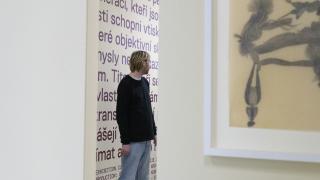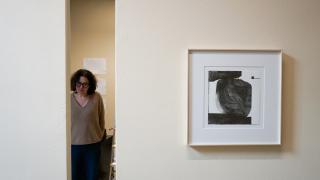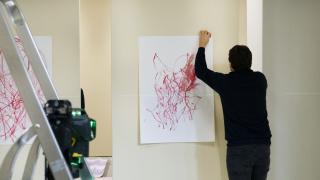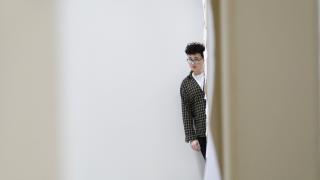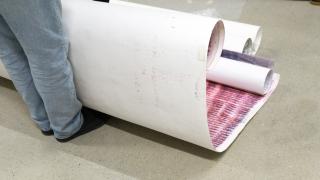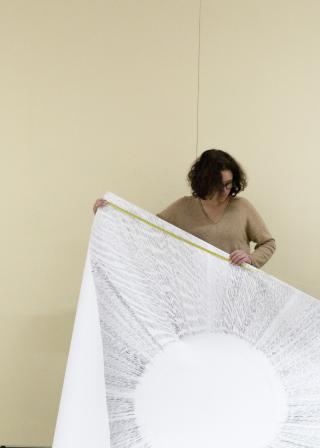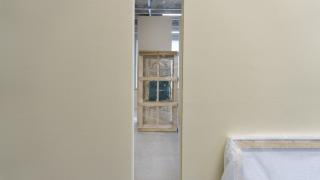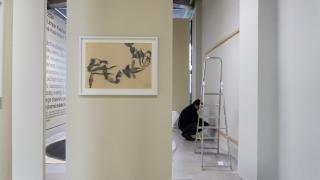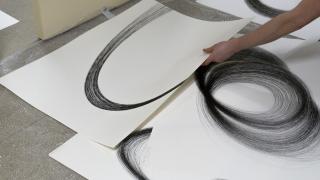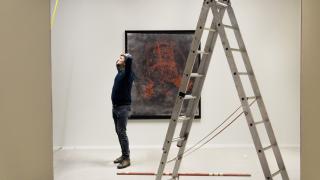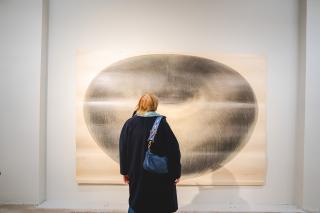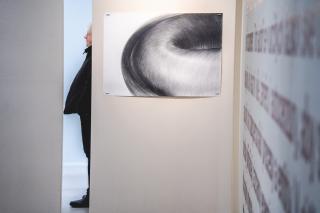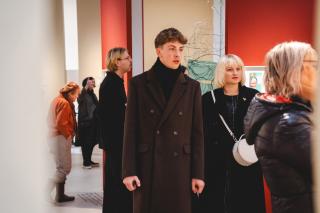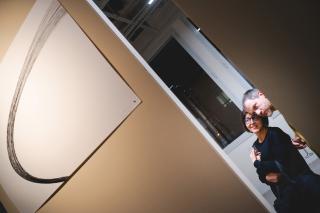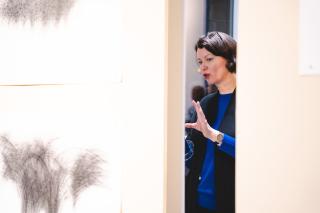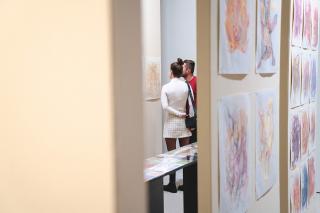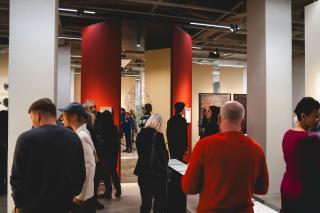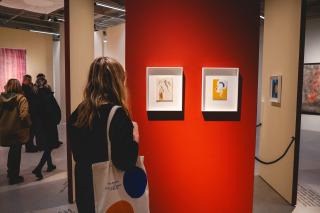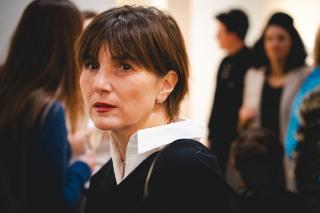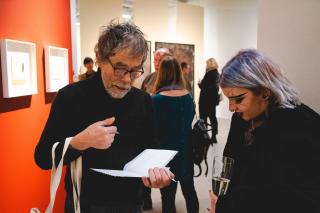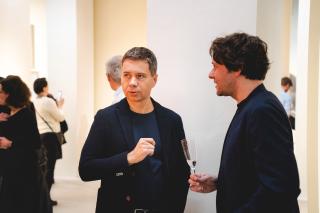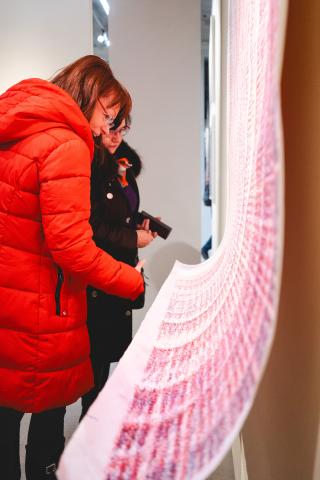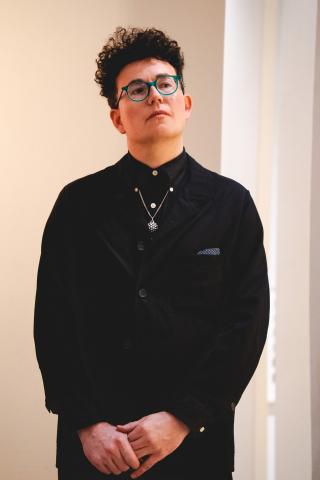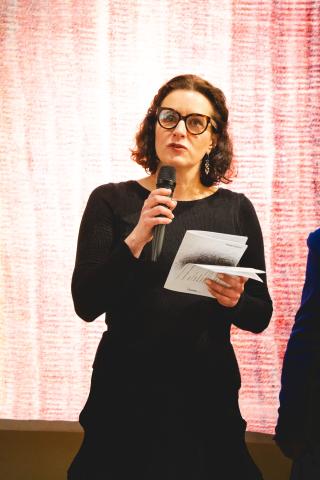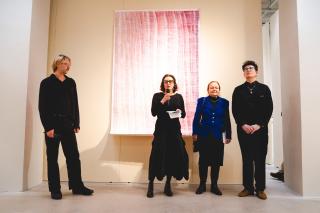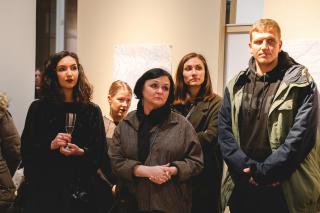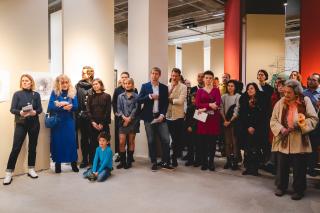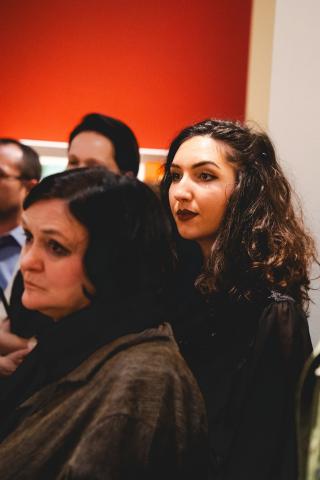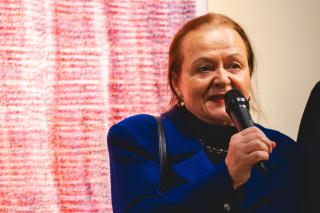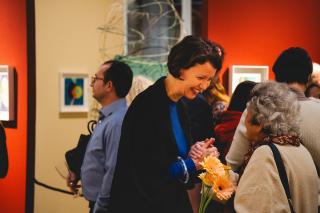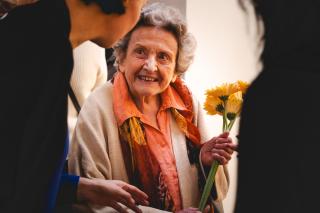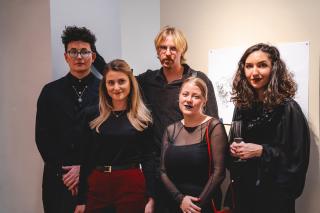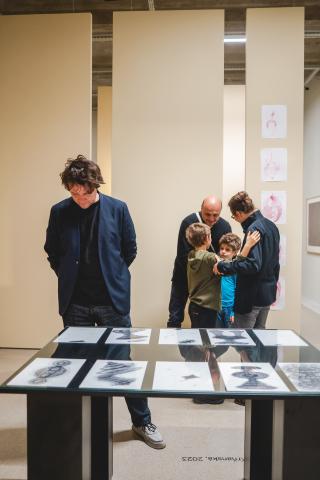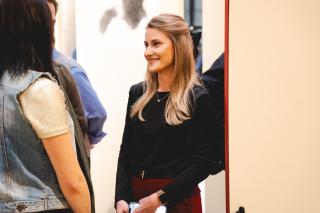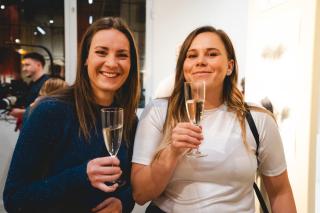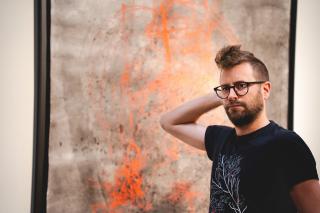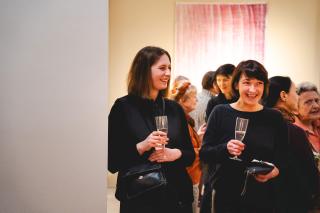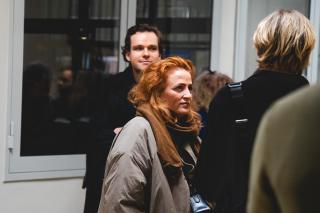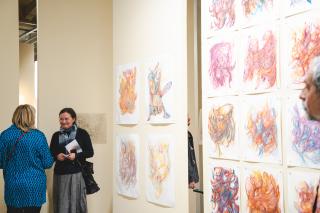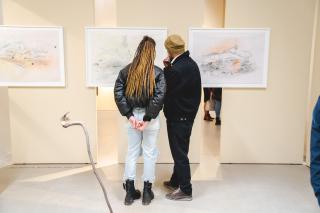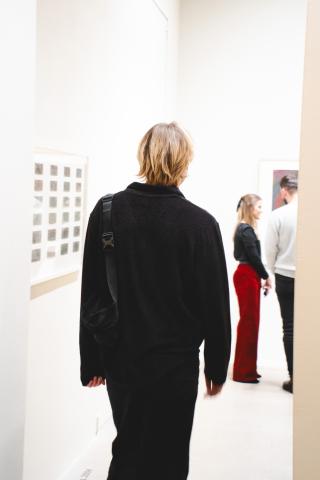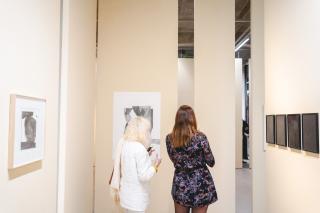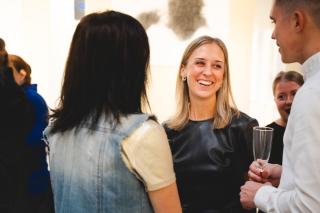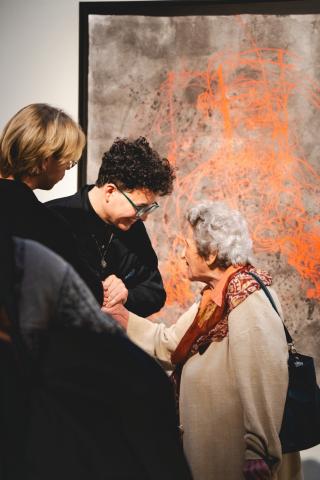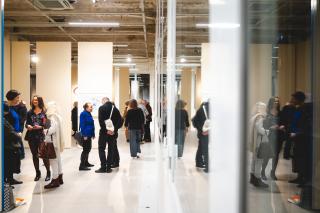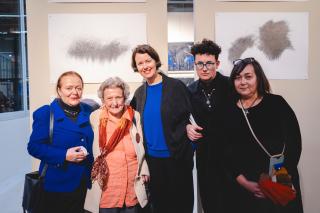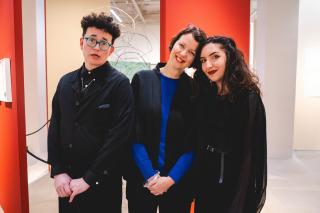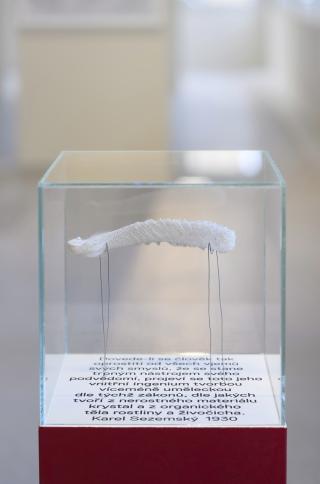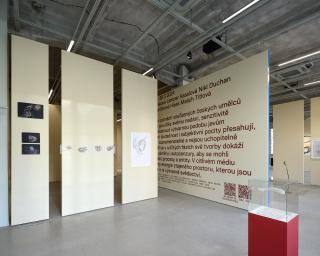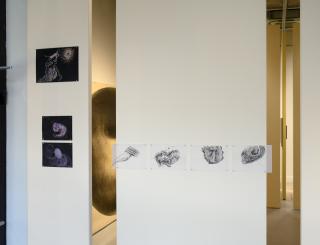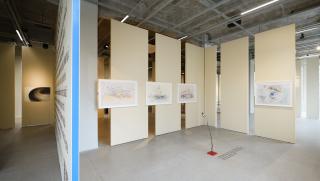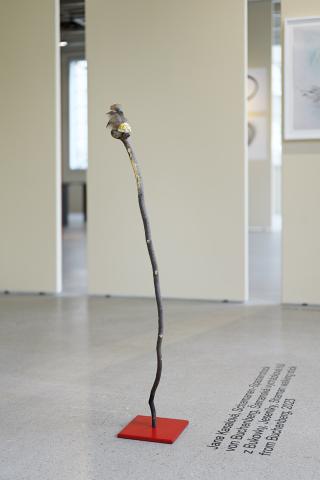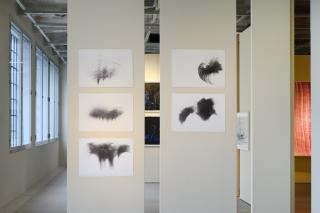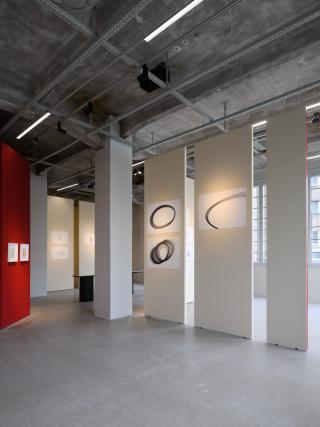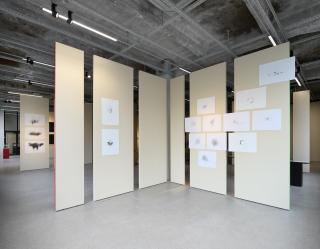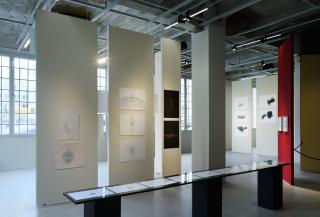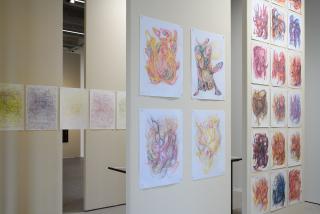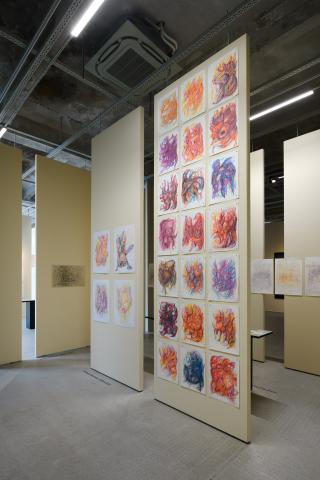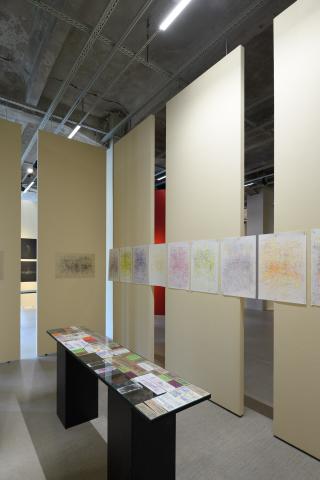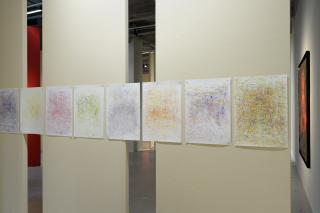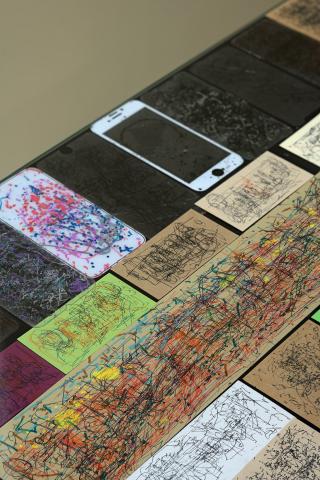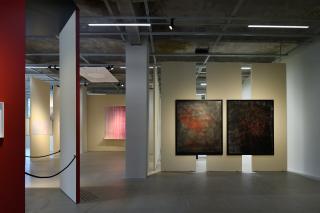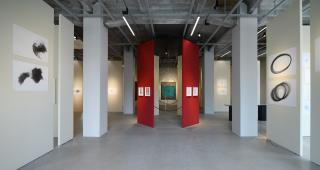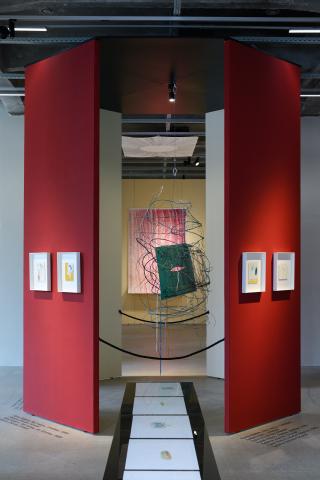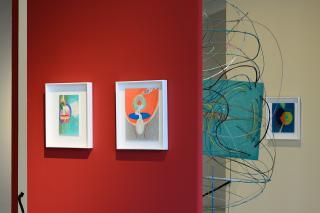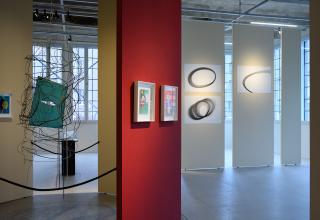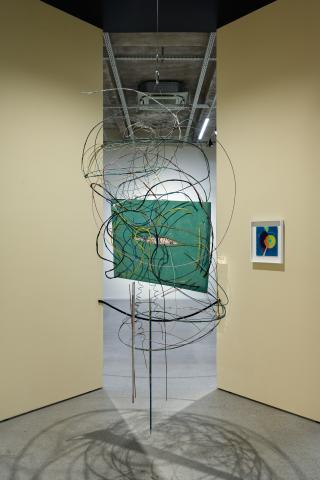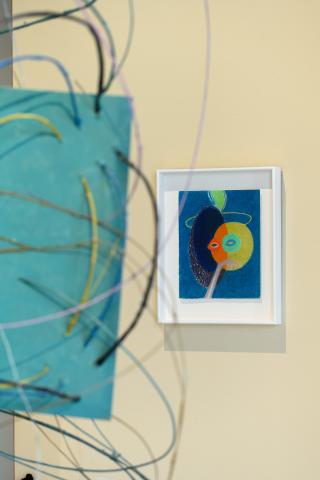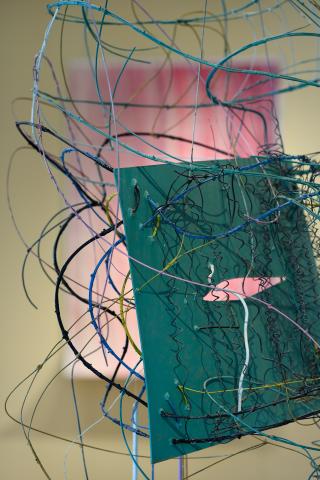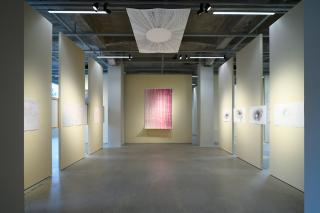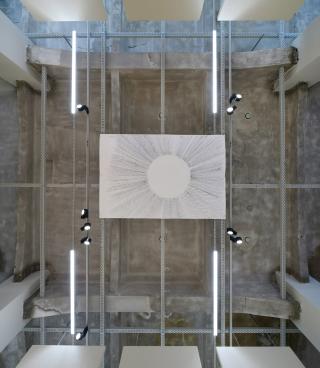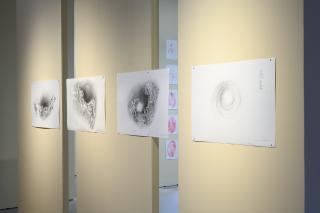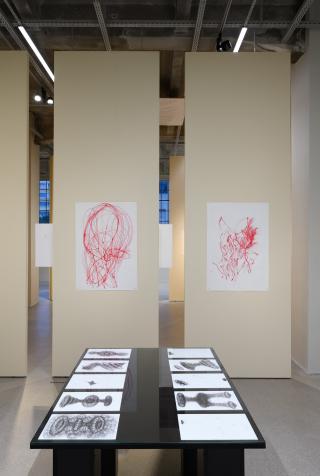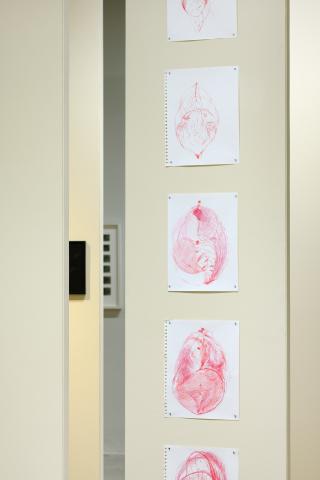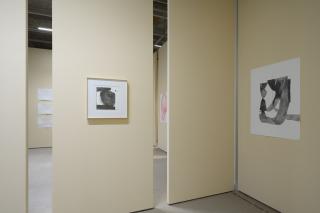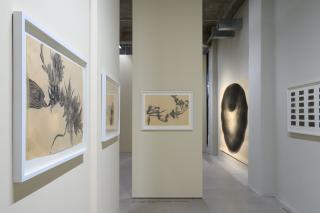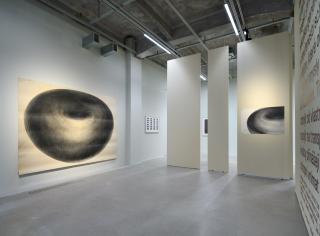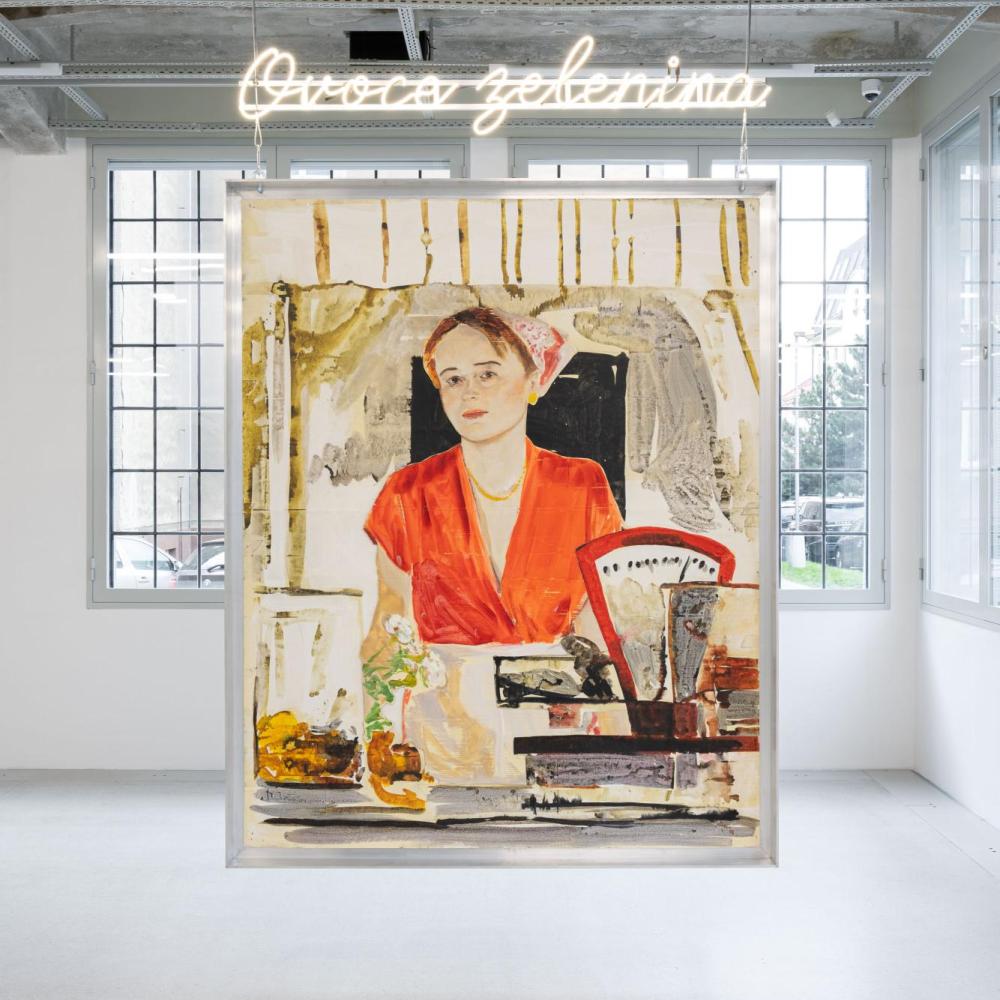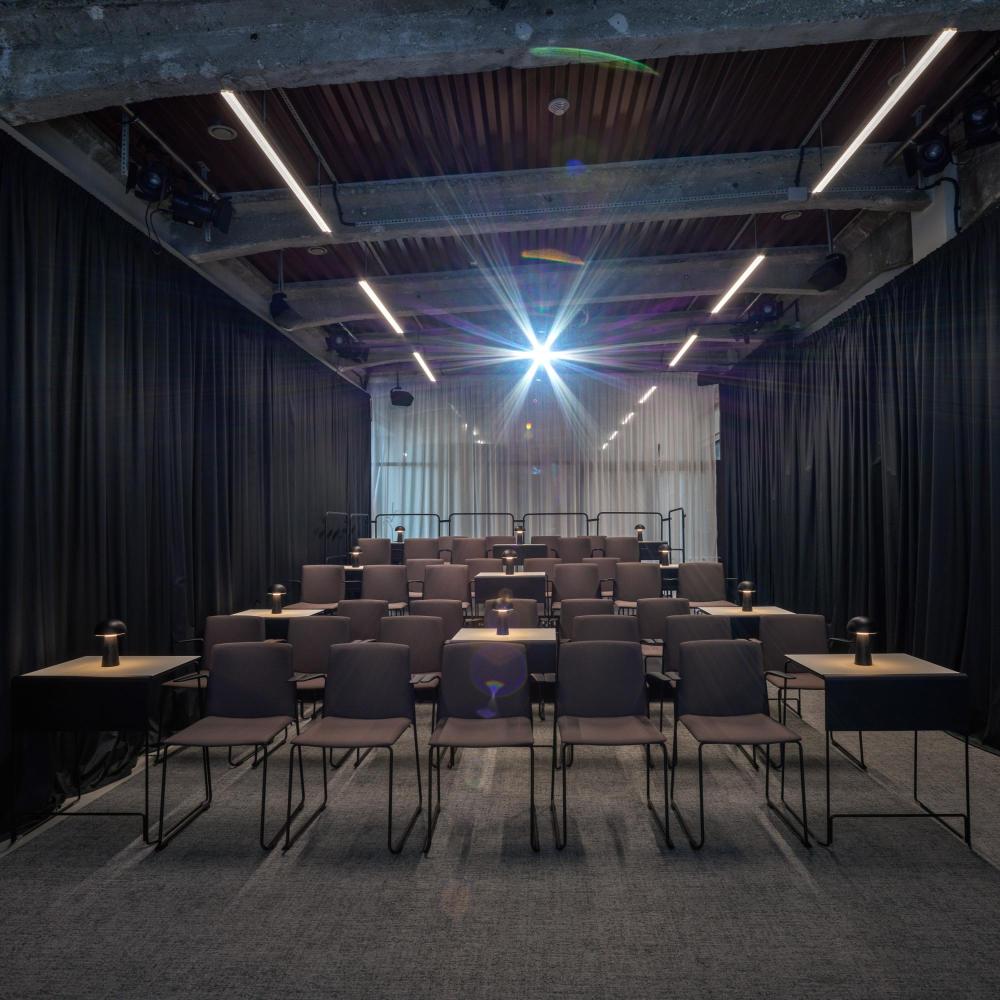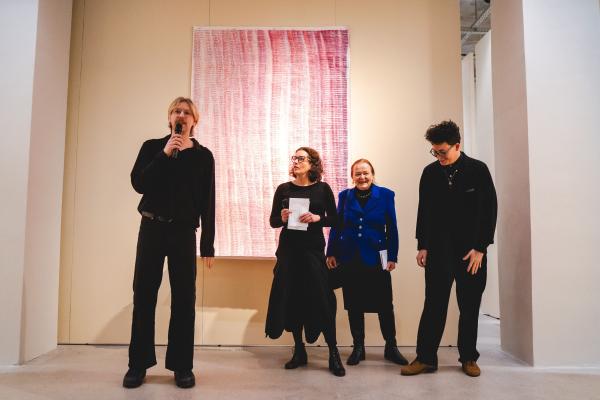
The study of history and bohemistics at Palacký University in Olomouc, supplemented by a specialisation in applied art and museology at Charles University in Prague, and the subsequent doctorate provided the basis for Anežka Šimková's professional work in Olomouc's museum institutions - first at the Museum of History and then at the Olomouc Museum of Art, which was established as a new institution in 1990. In 1993 she joined its professional team under the leadership of Pavel Zatloukal, whom she considers one of the most important personalities in the modern cultural history of Olomouc. She still cooperates with the museum.
You are currently the curator emeritus of the Olomouc Museum of Art, where you have, among other things, prepared the ongoing exhibition The Harbours of Unrest with your colleague Šárka Belšíková. Art brut in Poland. You collaborated on the exhibition Connestion at Telegraph Gallery, prepared by its author and curator, Terezie Zemánková. Is there anything that connects these two activities, which came together at the same time?
We didn't plan it this way at all. But sometimes things naturally synchronise, so it's not such a coincidence. Both Therese and I share a common research interest in phenomena in art that go beyond the usual understanding. There are more and more such people, but there are not many, and if there are, I have been honing my senses for such perception for many years. I do it all the time.
What do you see as the specifics of the two exhibitions?
The Connections exhibition presents a selection of contemporary visual artists whose sensibility leads them to record normally elusive realities, a kind of energetic record in the rare moments of their connection to an unnamable source. Authenticity, pure testimony without calculation. This is very rare. Especially in professional authors. The whole theme and the selection of the exhibited works have matured and are the result of Teresa's long-term research and reflection. The exhibition Ports of Unrest at the Museum of Art concerns non-professional artists whose artistic expressions are described as art brut and captures the Polish scene in a wide time span. They are very authentic reports on the perception of people standing literate, socially marginalised or psychologically handicapped people to whom society is not always completely friendly. For them, creation is a need to make their existence known in their own artistic language, independent of the trends of the official art scene. I think that both exhibitions could be among the most revelatory ones, the audience will find them. Despite their differences, both have a subtle mission. They can rub our sensitivity for understanding the otherness of others, for understanding the truth of a world that may exceed us. I was delighted that the Telegraph, which mostly produces a different kind of exhibition, included this fine show in its programme, and in such a sensitive architectural conception by Mark Thera.
Tell us more about your collaboration with Terezie Zemánková and the projects you have already realized together.
Since her studies in Prague and Paris, Terezie has been working on this subject and with her European perspective she has prepared a number of major exhibitions, projects and excellent publications on art brut in this country and abroad, but she also deals with modern contemporary art. I like her free flight, independence and courage. Her revelatory and personal projects always impress. They are never dominated by sovereignty, but always questioning and searching in the subtext. This is close to my heart. Terezie is the granddaughter of the now world-famous Anna Zemánek, a native of Olomouc. It was in the preparation of the large profile book Anna Zemánková, published in three languages by Kant to accompany the artist's dazzling exhibition in Lausanne, Switzerland in 2017, that we really worked a lot together. We have also continued to work on other projects, among the larger ones, for example, Olga Karlíková's exhibition Listening on Kampa, for which we edited and authored a large scholarly publication for the Sophistica Gallery in 2020, and last year we collaborated on the Floralia exhibition at the Montaneli Museum. We just help each other and I think we learn from each other. We are also both members of the international society ABCD for spreading awareness of art brut in our country.
Do you think that Olomouc has a special position in terms of interest in the expression of non-professional artists in our country?
I consider Olomouc to be a unique place where the interest in expressions of such work has had its continuity since the end of the 1960s. And it is very significant in a national context. It started in the Music Theatre Olomouc with small exhibitions of discovered non-professional authors (Marková, Zemánková, Řehák, etc.) later classified also in the category of art brut, prepared by Pavel Konečný, today probably the biggest collector of this kind of work in our country, Alena Nádvorníková, Pavel Herynek, Vladimír Ženožička. And thanks to Pavel Zatloukal and his clear-sightedness, with which he perceives art as part of a broader concept of culture, the purchases and collections of the Olomouc Museum of Art's own art brut collection gradually began to take shape in the late 1990s. It is very selective, unique, oriented so far mainly towards media art, and I have been putting it together for several years.
This was probably a bold move, unprecedented in our official gallery institutions. And how has the new convolute been used over time? And how did that interest continue to develop?
I think it was a significant step. Today, it is common in the world to have exhibitions of official work with the inclusion of works by non-professionals. In our country, we have done this routinely from the beginning, especially with exhibition surveys of collections. However, we mainly paid attention to the author profiles of the artists, I collaborated on these exhibitions with Arsén Pohribný, who prepared the exhibition of Anna Zemánková in 1999, later Natálie Schmidtová, Cecilia Marková, we exhibited the collection of Pavel Konečný, etc. The interest of the institution was programmatic. Later I had my own projects. The exhibition Flowers and Other Worlds from the museum collection was appreciated, with a reprise in Pardubice, but before that I presented Vlasta Kodríková in Olomouc and Cheb, or Adéla Ducháčová in Litoměřice. The topic of media drawing, like many others, fascinated me precisely by crossing the boundaries of the real and the ungraspable by ordinary reality.
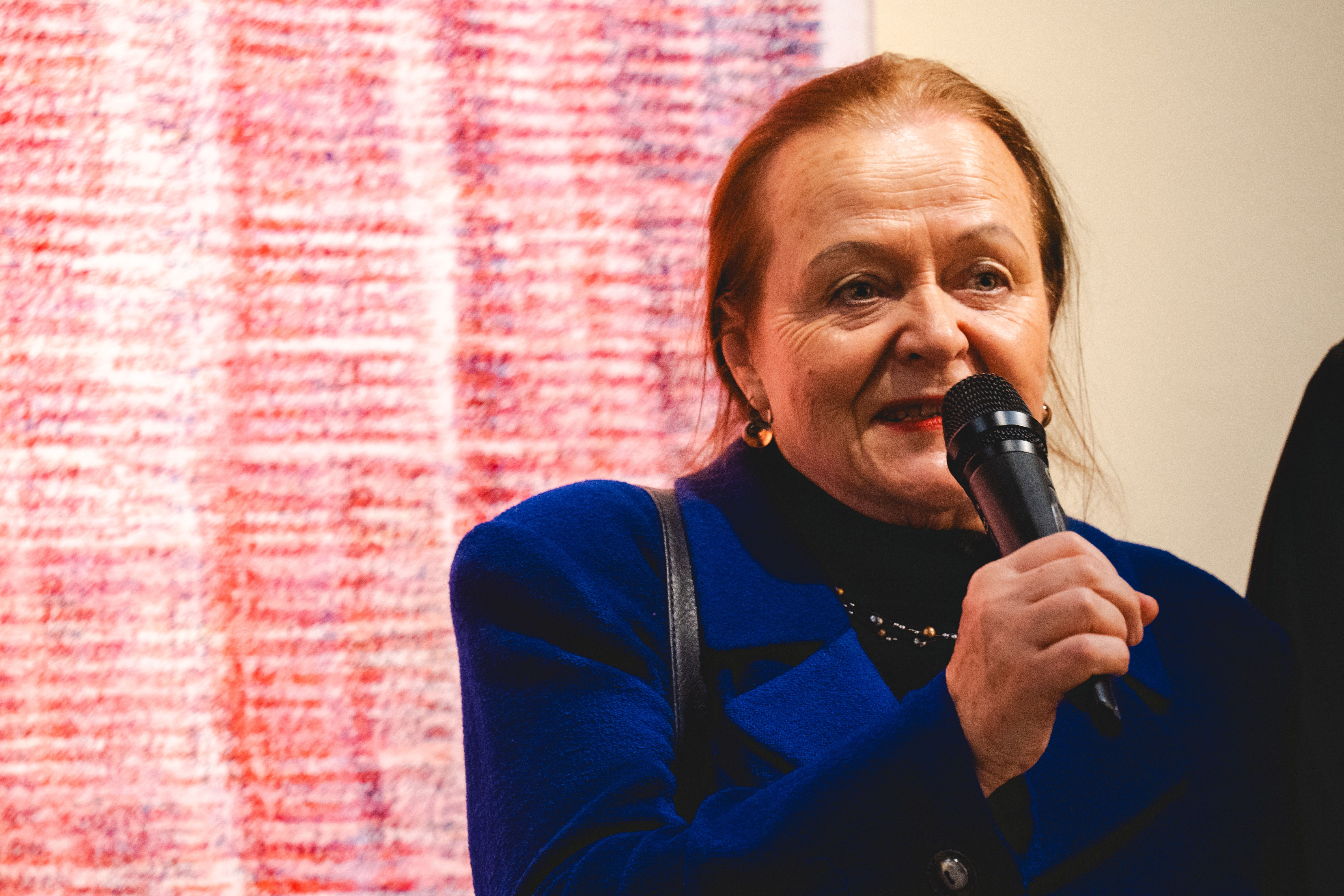
Many people remember the groundbreaking exhibition Art Brut in the Czech Lands, which took place in 2008 at the Olomouc Museum of Art.
It brought a surprise, it presented a processed profile of art brut in our countries, mainly on the drawings of medium artists, which dazzled with their splendour and the mystery of their origin in connection with spiritism. People travelled from all over the country to see the exhibition. It was prepared by Alena Nádvorníková, a surrealist, artist and theoretician who also worked at Palacký University. She was undoubtedly one of the most inspiring personalities. She had already made a large exhibition devoted to art brut in 1998 in Prague in the gallery U Kamenného zvonu (At the Stone Bell), and she continued with several foreign projects, but the Olomouc exhibition was also beneficial by including exhibits from the museum in Nová Paka and expanding a more holistic view of the Czech scene. We prepared the exhibition and the extensive and successful publication together. Everything has its continuity, this year's exhibition is actually a conceptual continuation of the previous one, it is also an overview, but this time it brings a look at Polish Art Brut. And once again, it appeals for its authenticity. However, we will not find media drawings in the spiritually different Polish environment.
We also know that you have contributed substantially to many publications not only in the museum but also in major art publishers. Is this related to your relationship with books?
That's without a doubt. The creation of a book is exciting, it's a complex process, the synchronisation of the work, the authors, the graphic designers, the level of the images, the texts. Art publications have their own specifics. But most of the time, the process of so-called kind terror always begins in the recovery of contributions, etc. Anyone who's done something like this knows what a galley it is, but there's a joy when you finally hold the scrapbook in your hand, and an even greater joy when it's on time. I learned a lot at Arbor vitae, the editorial and organizational cooperation with the publishing house started already during the preparation of the book Art Brut in the Czech Lands / Mediums, Solitaires, Psychotics in 2008, and later I continued with other major MUO exhibition and publication projects, e.g. Mysterious Distances / Symbolism in the Czech Lands (2015) with a Krakow reprint (Otto Urban), the most challenging was the coordination work on the exhibition and book The Broken Time (Karel Srp, Lenka Bydžovská) with Polish, Slovak and Hungarian reprints and other language publications (2018-2020), again in collaboration with Šárka Belšíková. And before that it was again an exhibition and book on Czech surrealism in 2016 at the Alš South Bohemian Gallery in Hluboká Beauty Will Be Spasmodic (Karel Srp, Lenka Bydžovská). But there were also other books.
What about the Rose Garden?
Yes, that was a dream come true. I wished to publish a book about the exquisite manuscript prayer books that were produced in the Czech and German countryside in the 18th and 19th centuries, a large collection of which was acquired for the Olomouc Museum of Art from the estate of the Prague collector Jan Poš. And Arbor vitae included the project in its programme plan. The exhibition at the MUO took place in 2009, and the book about the books, entitled The Rose Garden was eventually honoured with two prizes and great interest. I am proud of it. 2008 and 2009 were important to me, you figure things out when you actually do them. So the juxtaposition of these two themes, art brut and the seemingly peripheral phenomenon of a specific rural book culture, is interesting to me. Both are really far from the centre of officially understood art. I dealt with them in immediate succession in quick succession. I was fascinated by how original, powerful, and artistically remarkable, though different, both subjects are. Both relate to the same territory of our historical lands. Both belong to a spiritual culture growing up in this area under certain historical conditions. I looked for parallels in neighbouring countries and found none, neither in the phenomenon of media drawing, so widespread in this country, especially in the first half of the 20th century, nor in the hand-copied and decorated prayer books widespread in the Bohemian-German countryside in the 18th and 19th centuries. There is no doubt that these are completely unique phenomena of artistic expression in our territory, the prerequisites for which are also courage, freedom of thought and action. This raises important questions about the potential of this country and the degree of freedom of perception and expression that we, as inhabitants of this geographical area, carry within us. The current exhibition Connections actually asks such questions as well.
